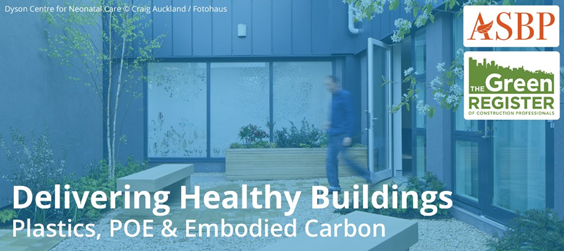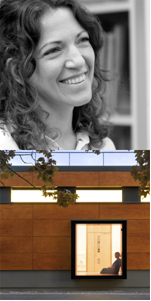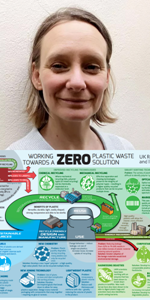
Why plastics?
The largest response to a call for evidence on single-use plastics in the Treasury’s history was received this summer, with 162,000 responses. WRAP estimated that the UK construction and demolition sector was responsible for around 50,000 tonnes of plastic packaging waste in 2014. However, about 25% of skips leaving site during the construction phase are filled with disposable packaging, including cardboard, timber and plastic, so it is very likely this is vastly underestimated.

There are many plastic based construction products and construction is responsible for 24% (and rising) of annual UK plastic consumption. Plastic manufacture is energy intensive with the UK’s largest chlorine making plant consuming more electricity than Liverpool. The BPA suggest the environmental cost to replacing plastic with alternatives materials would be nearly 4 times greater. Is this correct? We’ll examine the issues, impacts and common alternatives in carbon, health and cost terms.
Plastic nurdles have been found on 94% of UK beaches according to a survey by FIDRA. We’re delighted that Claire Wallerstein, co-founder of Rame Peninsula Beach Care will be joining us to discuss the effects of plastic pollution on our beaches, seas and animal habitats. Working with academics from Plymouth University , Claire estimates we are losing some 50 billion nurdles each year in the UK and on just an 80 metre stretch of beach in Cornwall, RPBC have found in excess of 10 million nurdles. These nurdles are feedstock to make most plastic construction products, including windows and pipes.

Why is Post Occupany Evaluation (POE) so important?
What does a healthy building look like and what does the feedback loop tell us? Hester Brough from leading architects FCBS will share their learning from post occupancy evaluation. POE is essential for delivery of buildings that are healthy and happy places to occupy.
POE offers the opportunity to review, fine tune and feedback on our buildings to make sure that are meeting their key objectives. Ensuring healthy indoor air quality is one important metric for a healthy building and this can only be proven by measurement. We’ll look at the tools, the most prevalent chemicals found and the common issues.

Plastics and the circular economy
Katherine Adams will discuss what we can learn about reducing the impacts of construction from the concepts of the circular economy. We’ll end with a discussion on the nuances of reducing plastics in the built environment.
It is estimated only 14% of plastics are collected to be recycled, with just 2% recycled in a close loop, 8% down-cycled and 4% lost. Of the rest, 14% incinerated, 40% goes to landfill and 32% leaks into the environment.

The latest embodied carbon tools and research
The ICE database remains the only free to use embodied carbon tool in the UK and Craig Jones is beginning the process of refreshing and updating it. He’ll discuss the update and timelines.
Jannik Giesekam will offer the big picture on embodied carbon and construction. His research focuses on the role of material efficiency and industrial energy demand reduction in securing a low carbon future.
The day will wrap up with a reception where you can enjoy a glass of wine and networking.
Programme
13:00 : Registration
13:30 : Welcome and introduction from the Chairs – Simon Corbey, Associate Director, Alliance for Sustainable Building Products and Lucy Pedler, Director, The Green Register
13:40 : Reducing plastic in the built environment – Simon Corbey, Associate Director, Alliance for Sustainable Building Products
- Plastics in construction – what are the numbers for single use plastic and construction products?
- What are the impacts of plastics from cradle to grave?
- Does it make carbon/ cost sense to reduce the amount of plastic going into our buildings?
14:00 : Plastic pollution and its effects on UK beaches, seas and wildlife – Claire Wallerstein, Rame Peninsula Beach Care
- Plastic construction materials polluting UK seas and beaches
- The micro-sized building blocks of construction industry plastics – why do so many of them end up in seabirds and fish?
- The hidden additives in construction industry plastics and their potential to cause long-term harm to human health and the environment
14:20 : The Importance of Post Occupancy Evaluation – Hester Brough, Project Architect, Feilden Clegg Bradley Studios
- The importance that post occupancy evaluation plays in delivering buildings that are healthy and happy places to occupy
- POE offers the opportunity to review, fine tune and feedback on our buildings
- Case study – the Dyson Centre for Neonatal Care, Bath
14:40 : Post Occupancy Evaluation and strategies for delivering healthy buildings – Elly Deacon, Architype
- Our strategies for delivering healthy buildings and how these have adapted through critical evaluation of user comfort and building performance in use.
- Taking this research to the next level to inform further improvements to occupant health.
- A healthy community - a 100% affordable community housing scheme in Lockleaze, Bristol
15:00 : Refreshments
15:30 : A carbon portrait of construction – Jannik Giesekam, Research Fellow, University of Leeds and CIE-MAP
- An update on progress in reducing carbon emissions from the UK built environment
- A review of the carbon targets set by UK construction firms
- An overview of guidance and best practice on reducing whole life carbon on construction projects
15:50 : An update on the ICE database – Craig Jones, Director, Circular Ecology
- ICE database background and context
- Insights into the new version of the ICE database - ICE V3.0
- Next steps - Timeline going forward
16:10 : The circular economy in construction – Katherine Adams, ASBP
- A view on the most beneficial ciricular economy strategies for the many different types of products and buildings
- What are the critical success factors for embedding a circular economy
- How do we move from rhetoric to practice
16:30 : Discussion: How to reduce plastic in the built environment?
17:00 : Drinks reception and networking
18:00 : Close
This event is held in partnership with
What did our delegates say about last year's seminar?
“Excellent exposure to real life solutions underpinned with technical information"
"Excellent range of speakers and quality of delivery"
“Lots and lots of useful information. New and Old to be reminded upon, although pushing my technical knowledge it was great to hear the science behind it!”
SPECIAL OFFERS:
BOOK 3 PLACES FOR THE PRICE OF 2!
Book your places online as normal and we will deduct the cost of the 3rd place once your booking is received. This offer may not be used in conjunction with other offers.
Above photo: The Dyson Centre for Neonatal Care, Bath
Smeaton Road
Bristol, BS1 6XN
United Kingdom
| Members of The Green Register, ASBP, AECB | £65.00 |
| Non-Members | £99.00 |
| Members of The Green Register, ASBP, AECB, GHA, STBA, UKGBC - Full Rate | £65.00 |
| Members of The Green Register, ASBP, STBA, SPAB - Full Rate | £65.00 |
| Early bird member | £55.00 |
| Members of The Green Register, ASBP - Full rate from 03/09/18 | £65.00 |
| Non-Members - Full rate | £99.00 |
| Non-Members - Full rate | £99.00 |
| Early bird non-member | £89.00 |
| Non-Members - Full rate from 03/09/18 | £99.00 |
Related files
|
Event terms and conditions
|

